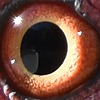HOME | DD
 TheBootesArtVoid — Grey-headed Flying Fox (Wild)
TheBootesArtVoid — Grey-headed Flying Fox (Wild)

#animal #animals #bat #bats #natural #nature #photo #photography #photos #animalphotography #australia #australian #australiananimals #australianwildlife #flyingfox #naturephotography #photographyanimals #photographynature #photographyphoto #wildlife #wildlifephotography #wildlifereferencephoto #thebootesartvoid
Published: 2022-03-24 02:49:26 +0000 UTC; Views: 2948; Favourites: 132; Downloads: 0
Redirect to original
Description
Species Name: Grey-headed Flying Fox
Species Latin Name: Pteropus poliocephalus
Native To: Australia
Conservation Status: Vulnerable
Photo Taken At: Werribee Park
Sub Species:
Little Red Flying-fox (Pteropus Scapulatus); located in north and eastern Australia. Conservation: Least concern
Spectacled Flying Fox (Pteropus Conspicillatus), Also known as Spectacled Fruit Bat; Located in the north-eastern regions of Queensland. Conservation status: Endangered
Black Flying Fox (Pteropus Alecto), Also known as Black Fruit Bat; Located in Australia, Papua New Guinea, and Indonesia. Conservation Status: Least Concern
Size (length): 23.0-28.9cm (9.1 – 11.4 inches)
Weight: 600-1000 grams (1.3 – 2.2 pounds)
Wingspan: 1m (3.3 feet)
Top Speed: 35kmph (21.8 mph)
Lifespan: 15-23 years
Population Size: 680,000
Description:
The grey-headed flying fox is the largest bat species in Australia. The animal gets this name sake due to the distinctive light-grey head which is emphasized by their brownish red collar and dark grey body. This species does not use echolocation like other bat species to navigate. Instead this bat navigates using its sense of smell as well as sight, as a result these bats have quite large eyes when compared to other species of bat. The shape of their head also differs from most other bat species, their head will take more of a dog-like appearance. Unlike most other bat species related to this one it has fur that extends down the legs as far as their ankles.
Diet:
These animals will feed on various pollen, nectar, and fruit from around 187 different plant species. These animals are nocturnal so they will generally leave their roost at around dusk where they can travel up to 50km (31.1 miles) in order to find food. These animals are the only mammalian nectivore and frugivore, as such they play an important role in the forests they reside in by spreading seeds and pollen from one location to another as they eat.
Behaviour:
Flying foxes in general are rather social animals and will form large communities that can consist of around 50 bats or more. Breeding season for these animals begins in November and continues until the month of January. Males will attract a mate using their olfactory receptors at which point the male and female will form a monogamous pair during breeding season. After mating the females will segregate themselves from the males so that they can care for the pups. The mother will usually give birth to a single pup after six months of pregnancy, in rare cases twins may be born. The pup will drink milk from the mother until it becomes independent after 6 months of age. Sexual maturity will be reached after 30 months or 2.5 years of age.
Threats:
These animals face multiple threats to their numbers. Currently the Grey-headed Flying Fox has issues with habitat loss due to the development of land, mass die offs due to extreme heat events, predation eagles, goannas, and snakes. These animals have also received fatal and non fatal injuries from collisions with or getting tangled in man made objects such as cars, buildings, fencing and netting. These animals have been noted to have come into contact with barbed wiring in backyards which has resulted in many casualties for this animal. These animals are also known to have been electrocuted due to collisions with power lines.
These animals also compete for habitats and food with the closely related Black Flying Fox which also can contribute to lower numbers. Furthermore it seems that at times this species also cross breeds with the Black Flying Fox which can result in hybridization which can further reduce their numbers.
Historically these animals have had a negative perception to them which has not helped with their numbers. When food is scarce in their local roosting area these animals may resort to feeding from orchards, fruit crops and other agricultural settings. During the early 20th century this behavior lead to the animals being declared a pest that needed to be eradicated, it has been noted that around this time $300,000 was spent in bounties to cull the species. Since this time the owners of orchards have moved to using netting to discourage birds and bats from eating their crops however, the period of indiscriminate shooting of birds and bats contributed largely to their endangered status today.
Negative perceptions persist for the animal as it is a natural carrier of three zoonotic viruses that are potentially lethal to humans. The recently discovered viruses are the Hendra virus, Australian bat lyssavirus and Menangle virus. That said only two known cases are known of bat to human transmission with the Australian bat lyssavirus and no recorded deaths have been noted from these transmissions.
Historically these animals suffered many casualties during the 1970's and the 1980's due to lead poisoning that was sourced from lead in car petrol. The lead would accumulate in the fur of urbanized roosts of this animal and would inadvertently be consumed when they groomed themselves which would lead to poisoning.
The following plants bear fruit which tend to be toxic for these animals:
Queen Palm (Syagrus Romanzoffiana) Also known as Cocos Palm; Native to South America
Chinese Elm (Ulmus Parvifolia) Also known as Lacebark Elm; Located in China, India, Japan, North Korea, and Vietnam
Privet (Ligustrum); 50 different species native to Europe, north Africa, and Asia (Only one species is considered native to the state of Queensland, Australia)
Conservation:
Wildlife rescue teams are trained to care for flying foxes that are injured or otherwise unable to care for themselves. This includes adults who have been non-fatally injured and have the possibility of returning to the wild after recovery. Baby flying foxes that have been separated from their mothers are taken care of until they can be released in the wild once more. The flying foxes that are taken into care will also receive vaccination to reduce the chances of infection of rabies between bats and from bats to humans. Baby flying foxes may get separated by falling off their mother during flight, due to sickness or tick paralysis, or due to the injury/death of the mother. Baby flying foxes are usually taken in for care within four to six of age.
In some local jurisdictions the Queen Palm has been banned from being grown due to their levels of toxicity to the flying foxes.
Until recently it was believed that the numbers of this species was far more abundant with numbers being somewhere in the millions. A more accurate estimation in 2019 placed the numbers of this species further down to 586,000 individuals. The main approach to assisting the recovery of numbers for this species involves continued study and monitoring whilst attempting to identify, protect, and increase key foraging and roosting habitats.
Further Reading (general information):
Wikipedia: en.wikipedia.org/wiki/Grey-hea…
Kidadl: kidadl.com/animal-facts/grey-h…
Animalia: animalia.bio/grey-headed-flyin…
Australian Museum: australian.museum/learn/animal…
Further Reading (Conservation)
Department of Agriculture, Water and the Environment: www.awe.gov.au/environment/bio…
Related content
Comments: 26

👍: 1 ⏩: 1

👍: 1 ⏩: 1

👍: 1 ⏩: 1

👍: 1 ⏩: 1

👍: 1 ⏩: 1

👍: 1 ⏩: 1

👍: 1 ⏩: 0

👍: 1 ⏩: 1

👍: 0 ⏩: 0

👍: 1 ⏩: 1

👍: 0 ⏩: 0

👍: 1 ⏩: 1

👍: 0 ⏩: 1

👍: 1 ⏩: 0

👍: 1 ⏩: 1

👍: 0 ⏩: 1

👍: 1 ⏩: 1

👍: 0 ⏩: 1

👍: 1 ⏩: 1

👍: 0 ⏩: 1

👍: 1 ⏩: 0

👍: 1 ⏩: 1

👍: 0 ⏩: 1

👍: 1 ⏩: 0

👍: 1 ⏩: 1

👍: 0 ⏩: 0


























